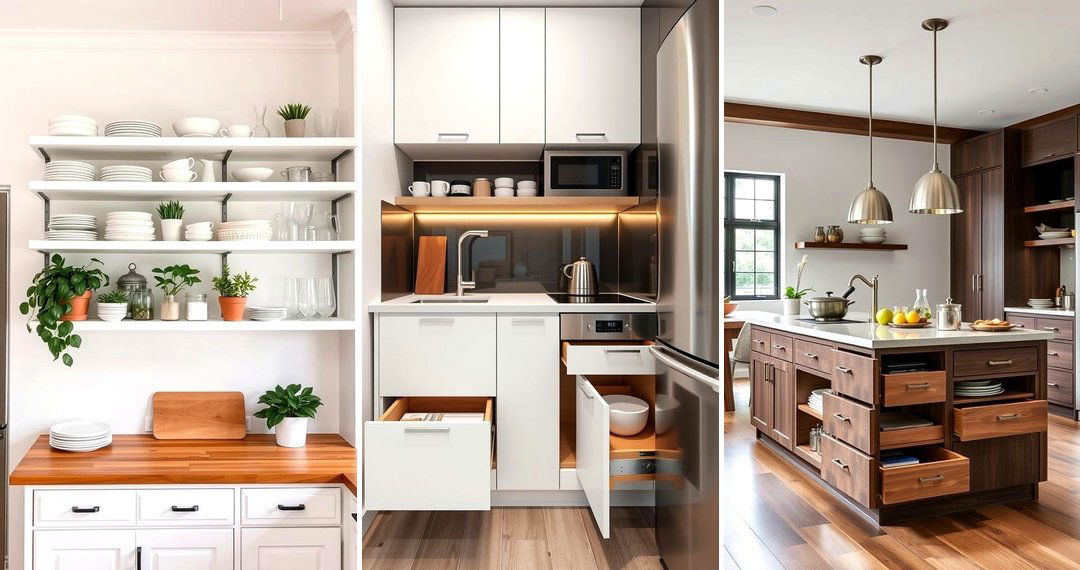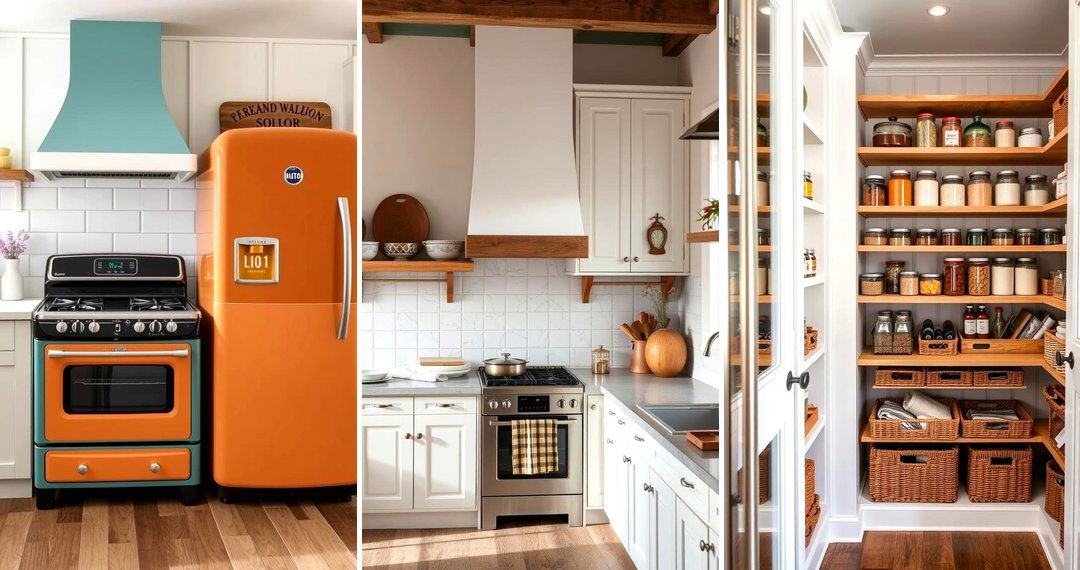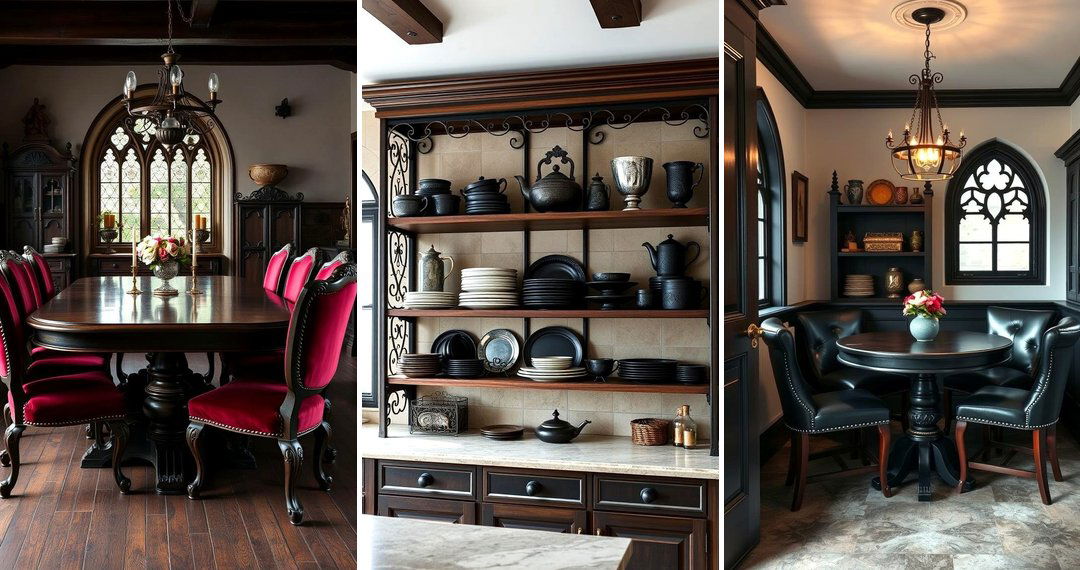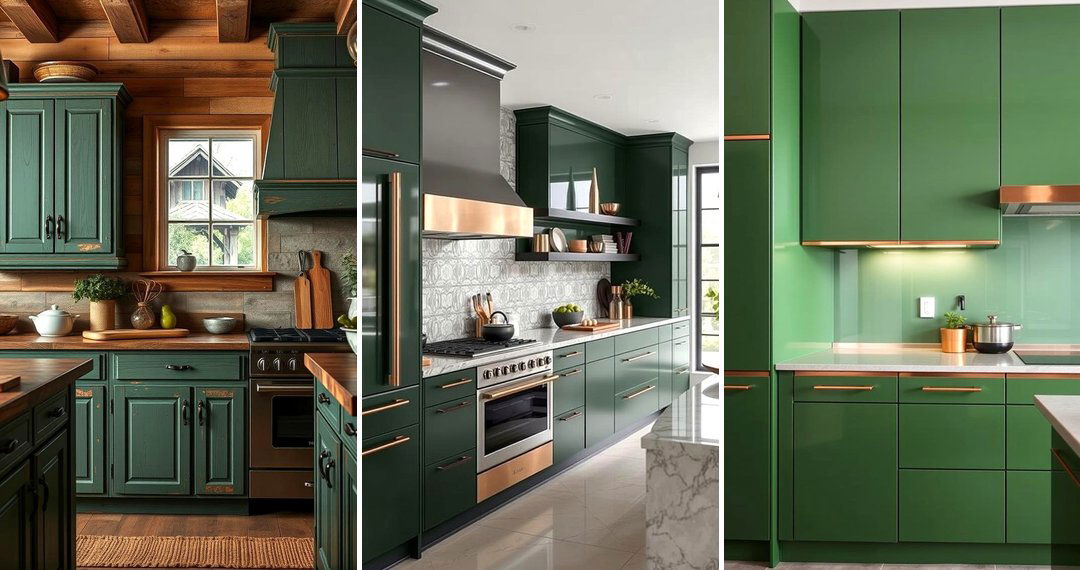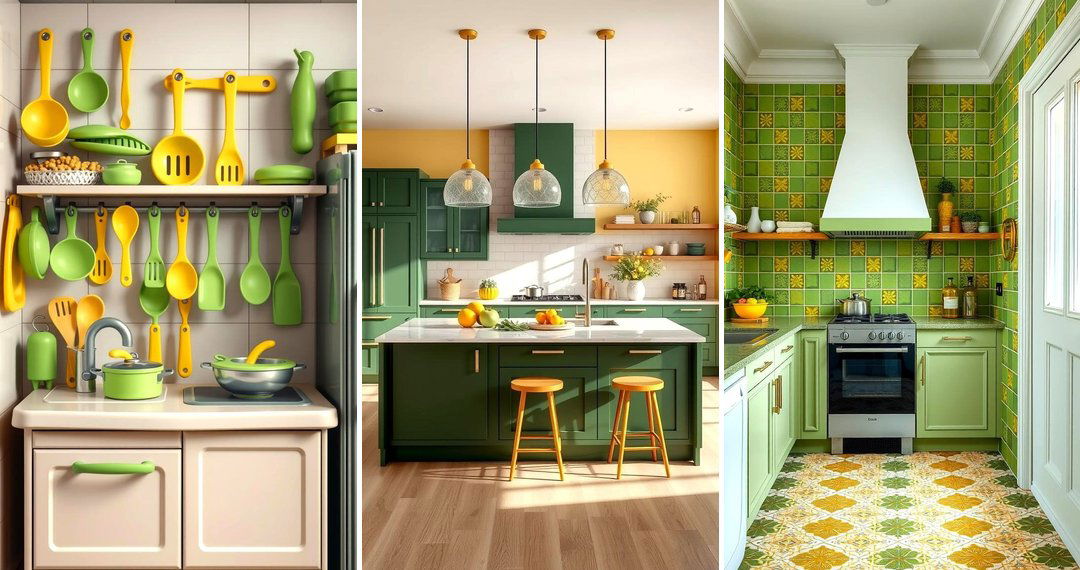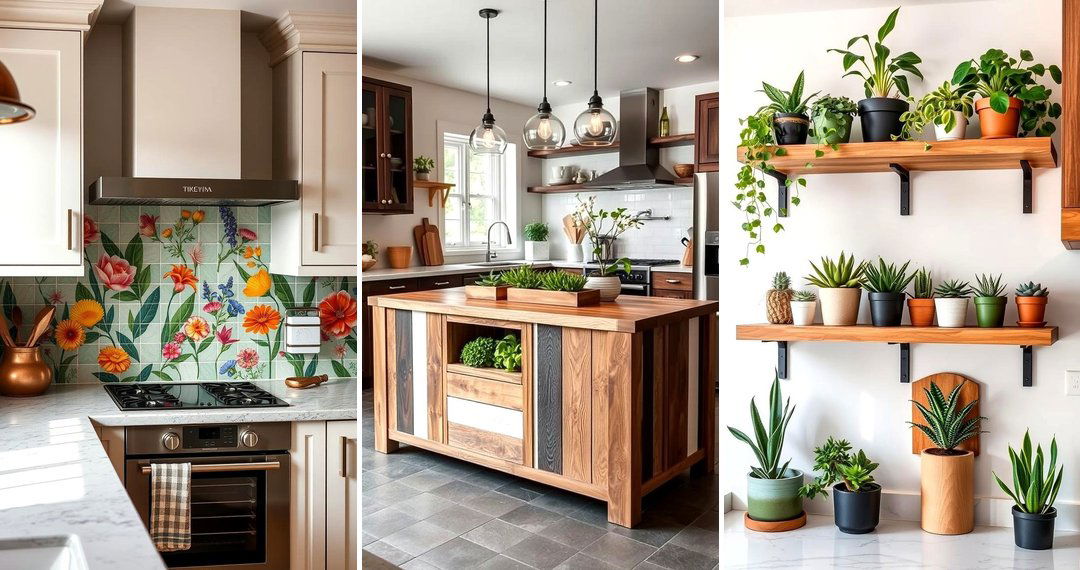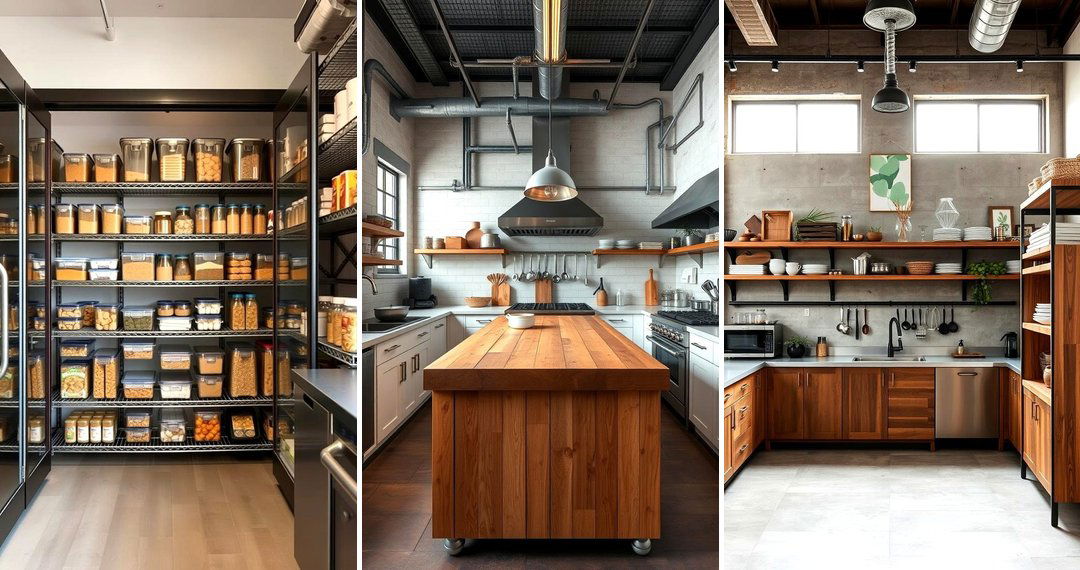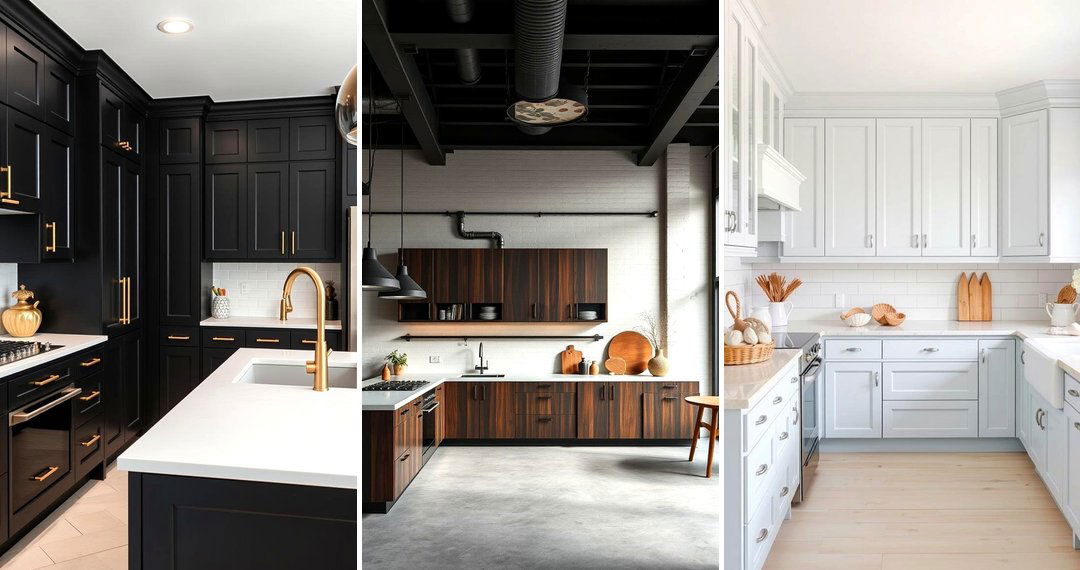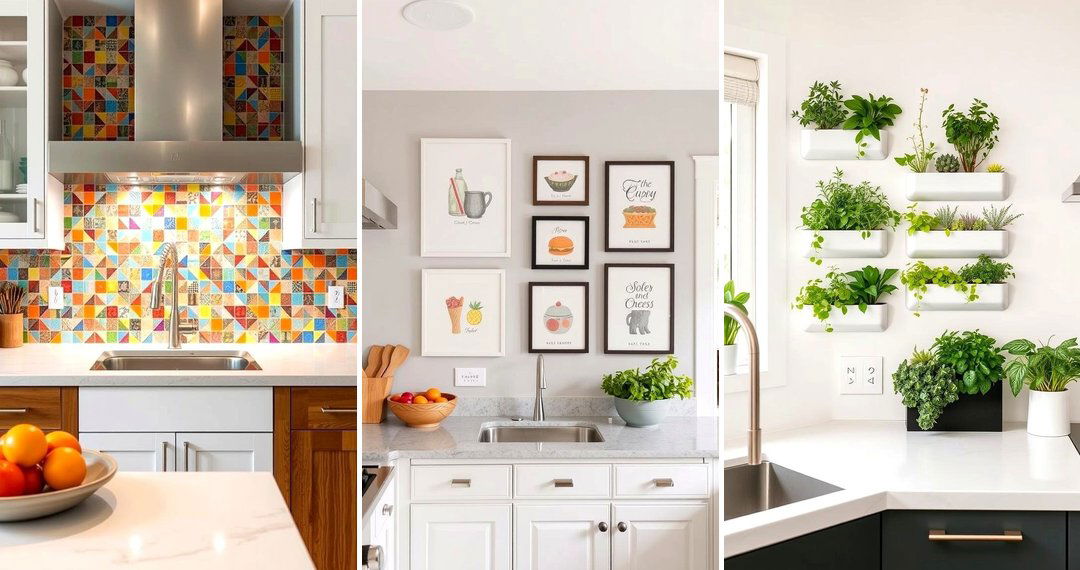Embracing tranquility and functionality, Japanese kitchen design offers a serene approach to culinary spaces. It's a philosophy that blends natural elements, minimalist aesthetics, and thoughtful organization to create an environment that is both beautiful and highly practical. The essence lies in simplicity, clean lines, and a deep connection to nature, fostering a sense of calm and focus. Discover how these principles translate into stunning and efficient kitchen layouts, inspiring you to create your own harmonious cooking haven. Let's explore the captivating world of 24 Japanese Style Kitchen Ideas.
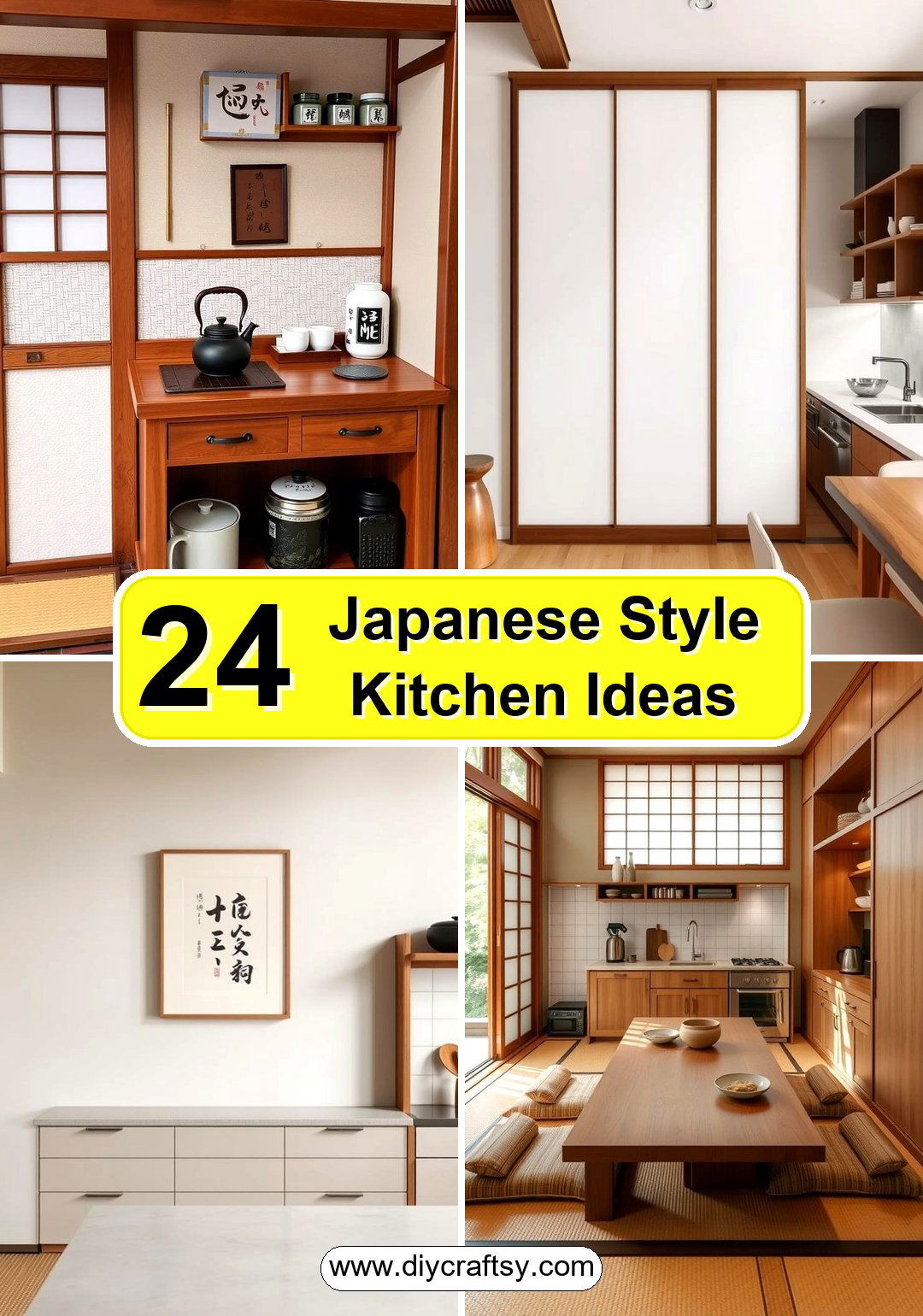
1. Natural Wood Cabinets

The warmth and texture of natural wood are fundamental to Japanese design. Consider incorporating light-toned wood like cedar or cypress for your kitchen cabinets. These materials not only bring an element of nature indoors but also create a bright and airy feel. The subtle grain patterns and natural variations in the wood add visual interest without being overwhelming. Furthermore, wood is a durable and sustainable choice, ensuring longevity and aligning with the Japanese appreciation for natural resources. Opt for simple, clean lines in the cabinetry design to maintain the minimalist aesthetic.
2. Shoji Screen Inspired Dividers

Bringing the elegance of traditional Japanese architecture into the kitchen, shoji screen-inspired dividers can offer both aesthetic appeal and functional flexibility. These translucent screens, typically made of lightweight wood frames and rice paper, allow soft light to filter through while providing a sense of separation. For instance, you might use a shoji screen to partially enclose the kitchen area, creating a subtle division from the dining or living space without completely closing it off. This fosters an open yet defined feel, characteristic of Japanese interior design.
3. Minimalist Open Shelving
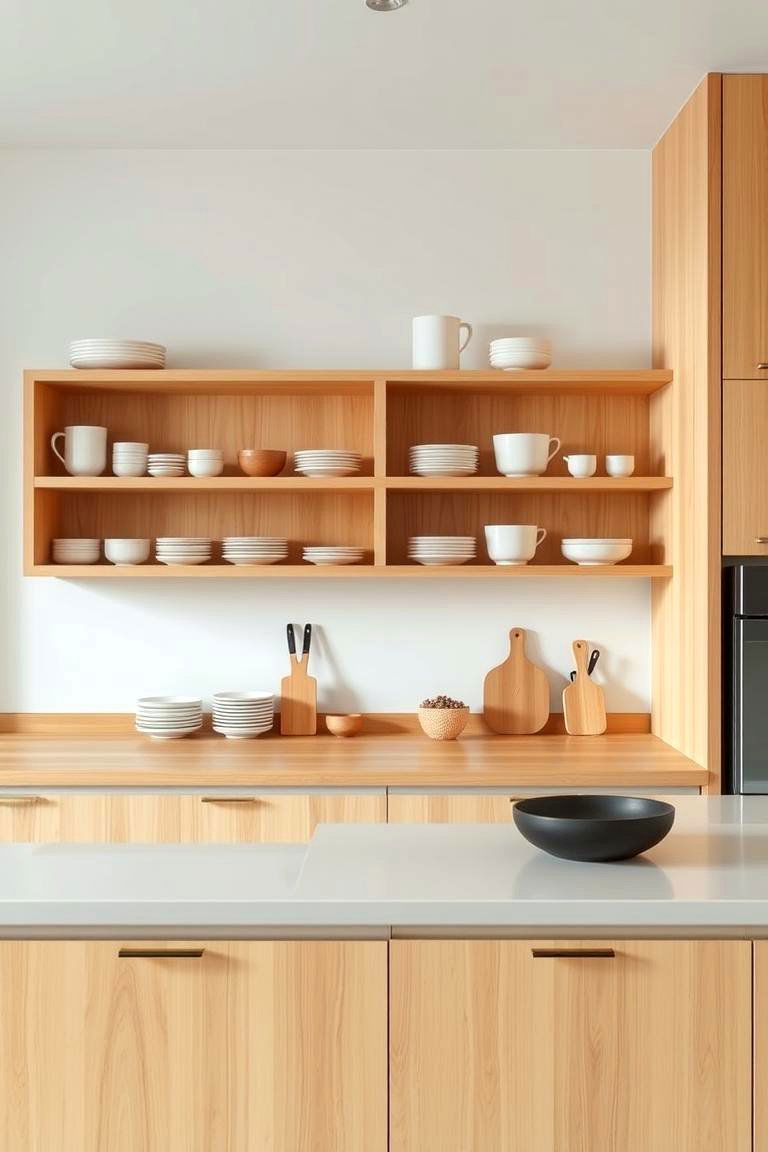
What defines a Japanese kitchen is often its decluttered appearance. Embrace this by opting for minimalist open shelving instead of bulky upper cabinets. These shelves provide easy access to frequently used items while encouraging you to keep your countertops clear and organized. Consider displaying only essential and aesthetically pleasing tableware, such as simple ceramic dishes or handcrafted wooden bowls. Moreover, the visual lightness of open shelving contributes to a more spacious and airy atmosphere, enhancing the overall sense of tranquility in the kitchen.
4. Built-in Rice Cooker Niche
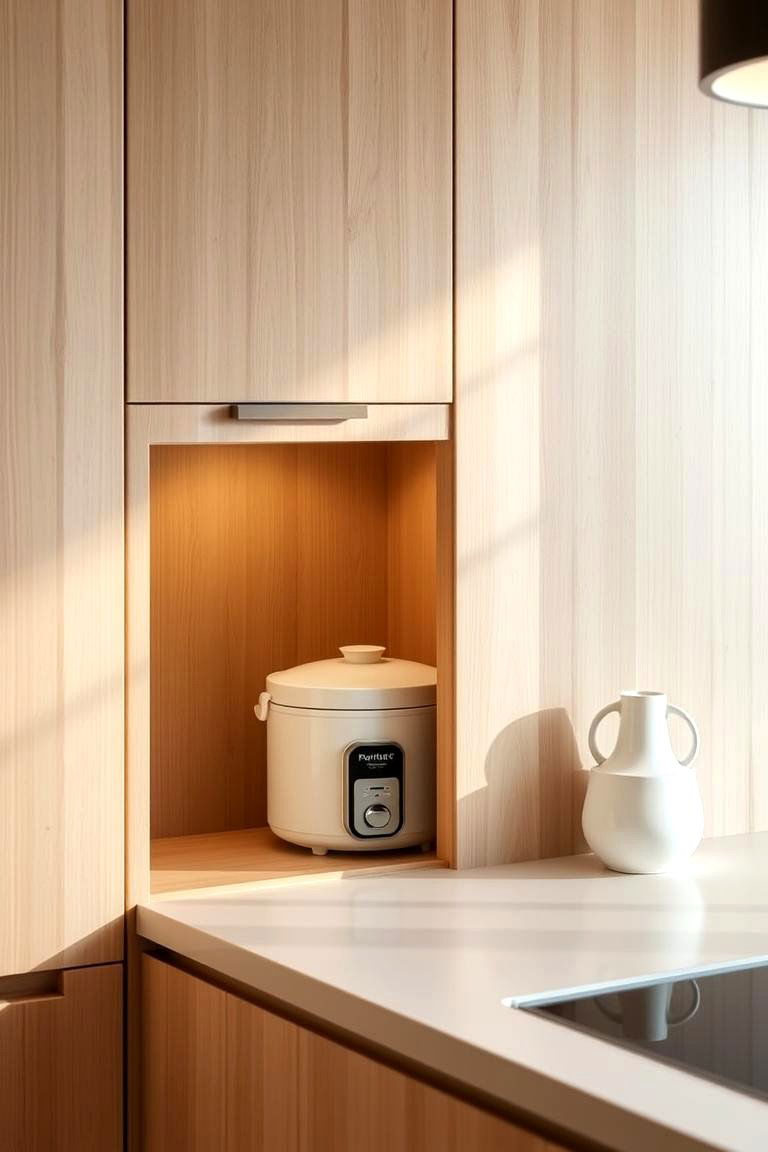
For those who frequently enjoy rice, a built-in niche for a rice cooker is a practical and space-saving addition. This dedicated space keeps the appliance neatly tucked away when not in use, contributing to the kitchen's clean aesthetic. Furthermore, it can be designed with proper ventilation to prevent steam buildup. Imagine the convenience of having your rice cooker seamlessly integrated into your countertop or cabinetry, ready to prepare a staple of Japanese cuisine at a moment's notice.
5. Tatami Mat Flooring Accent
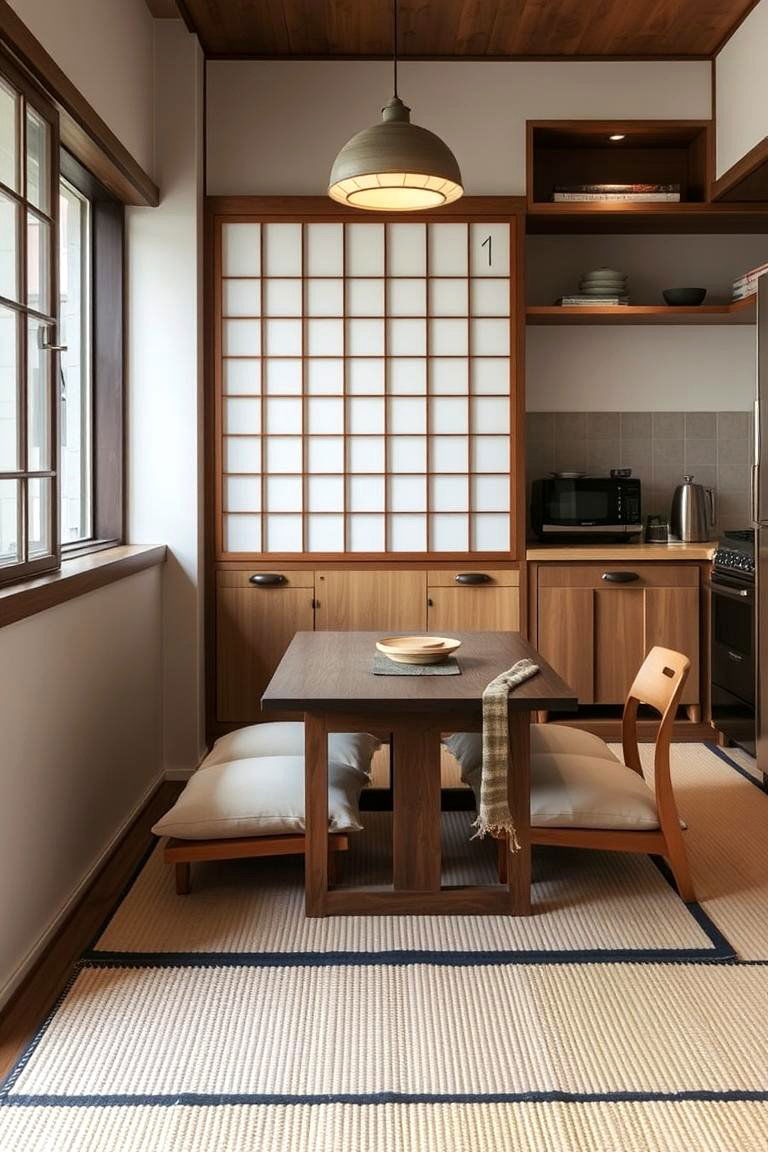
Introducing a small section of tatami mat flooring can add an authentic Japanese touch to your kitchen. While a full tatami floor might not be practical for a kitchen environment due to potential spills, a designated area, perhaps under a small dining table or as a decorative element, can evoke a sense of traditional Japanese design. The natural texture of the woven rush grass provides a unique tactile experience and adds warmth to the space. Also, tatami mats are known for their comfort and sound-dampening properties.
6. Sliding Doors for Pantry
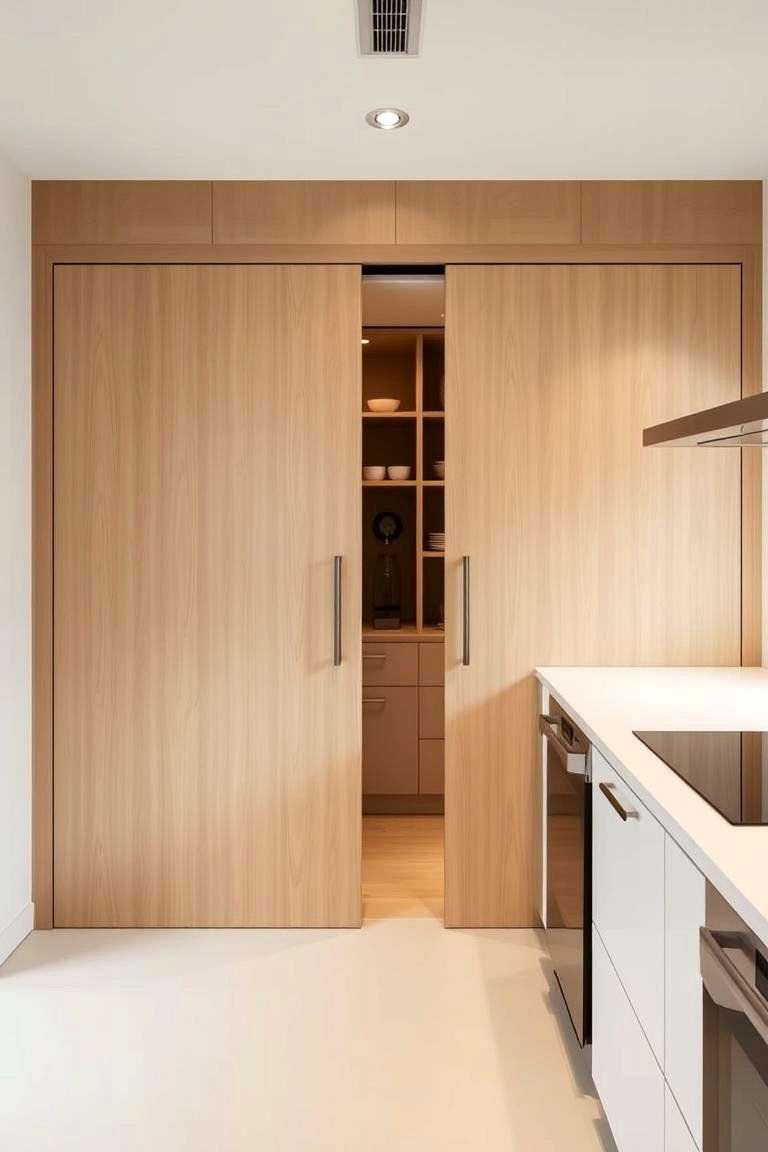
Consider incorporating sliding doors, reminiscent of traditional Japanese fusuma doors, for your pantry. These doors save space compared to traditional swinging doors and can seamlessly blend with the surrounding cabinetry. With their clean lines and minimalist design, they contribute to the overall uncluttered aesthetic of a Japanese kitchen. Moreover, sliding doors can be easily opened and closed, providing convenient access to your pantry while maintaining a sleek and streamlined appearance.
7. Integrated Low Dining Table

Bringing in an integrated low dining table or a breakfast nook with low seating can create a cozy and intimate dining experience within the kitchen space. This design choice reflects the Japanese tradition of dining closer to the floor. Imagine enjoying a meal in a relaxed setting, fostering a sense of connection and informality. Furthermore, a low table can also serve as an additional workspace when needed, adding to the kitchen's functionality.
8. Subtle Earth Tone Palette
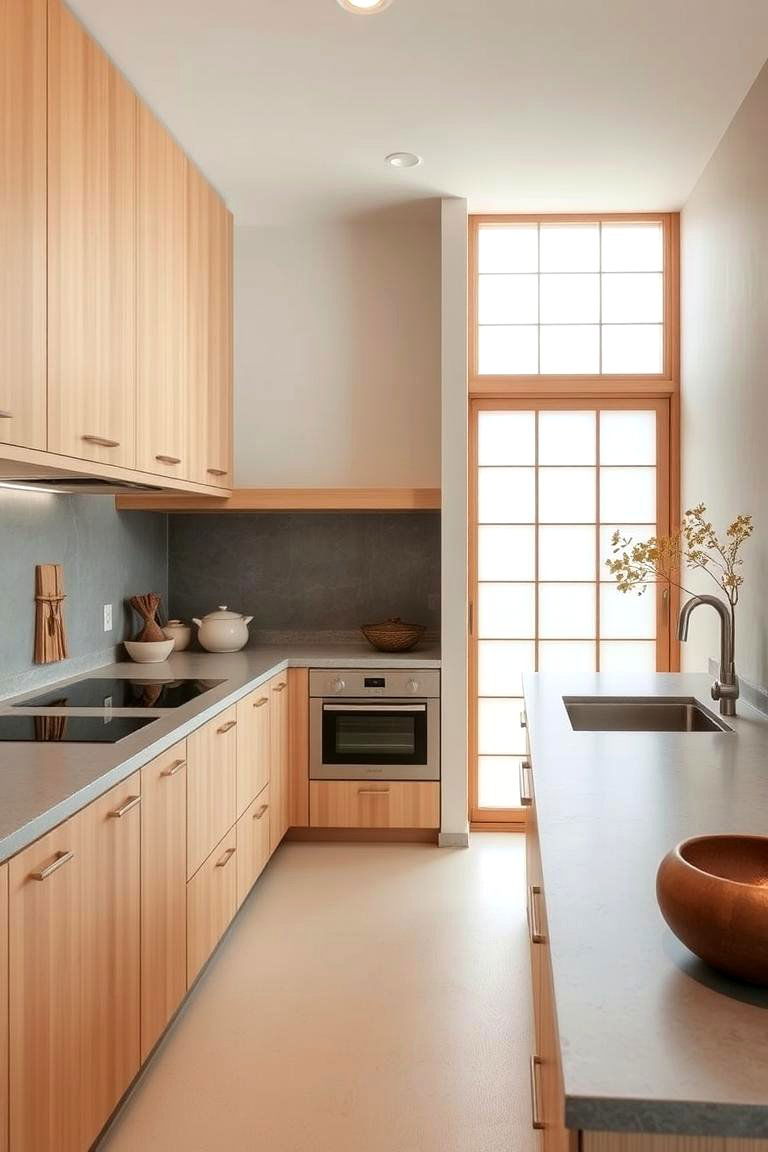
The color palette in a Japanese kitchen typically revolves around subtle earth tones, such as soft whites, creams, light grays, and natural wood tones. These colors create a calming and harmonious atmosphere. For example, you might choose off-white for your walls and countertops, complemented by light wooden cabinets. This understated palette allows the natural textures and clean lines of the design to take center stage, promoting a sense of serenity and balance.
9. Emphasis on Natural Light

Natural light is a crucial element in Japanese design, and maximizing it in your kitchen can significantly enhance the space. Consider large windows or skylights to flood the area with daylight. Sheer curtains or blinds can be used to diffuse the light gently, creating a soft and inviting ambiance. With ample natural light, the kitchen feels more open, airy, and connected to the outdoors, aligning with the Japanese appreciation for nature.
10. Dedicated Tea Preparation Area
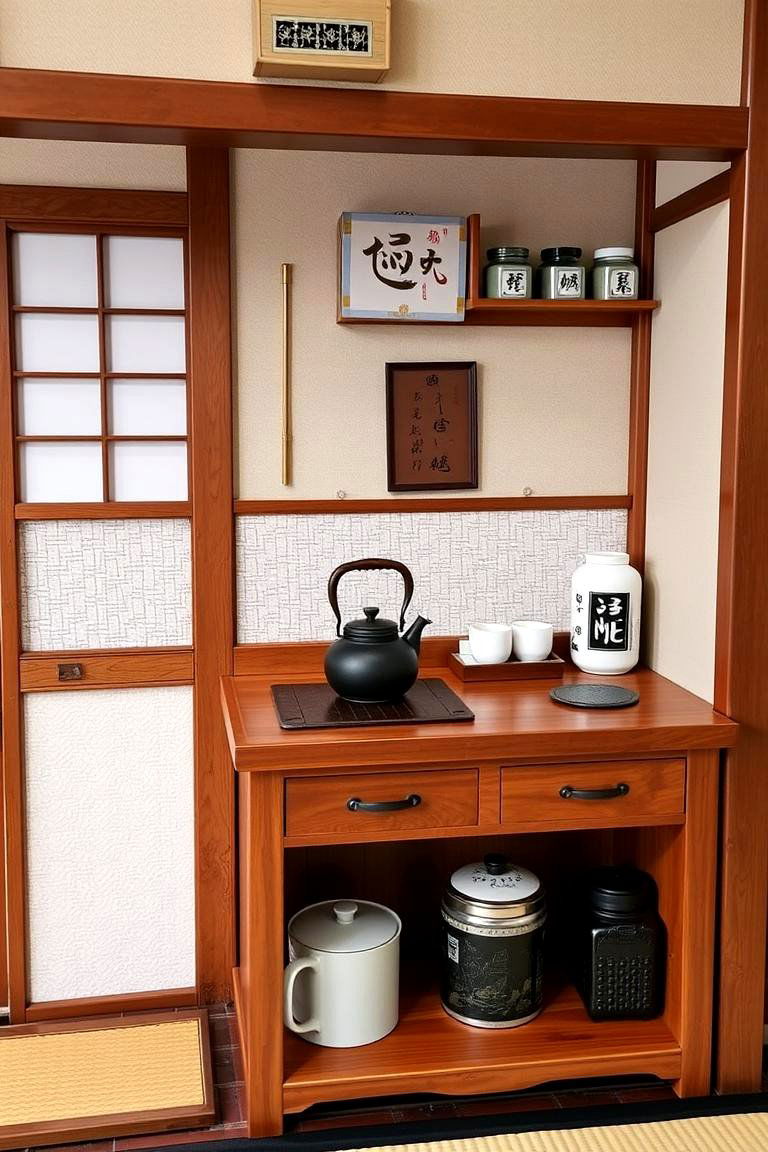
Reflecting the importance of tea in Japanese culture, consider creating a dedicated tea preparation area in your kitchen. This could be a small countertop space with a kettle, tea set, and storage for tea leaves. Having a designated area makes the ritual of preparing and enjoying tea more intentional and peaceful. Furthermore, it adds a touch of Japanese tradition and elegance to your kitchen design.
11. Stone or Concrete Countertops
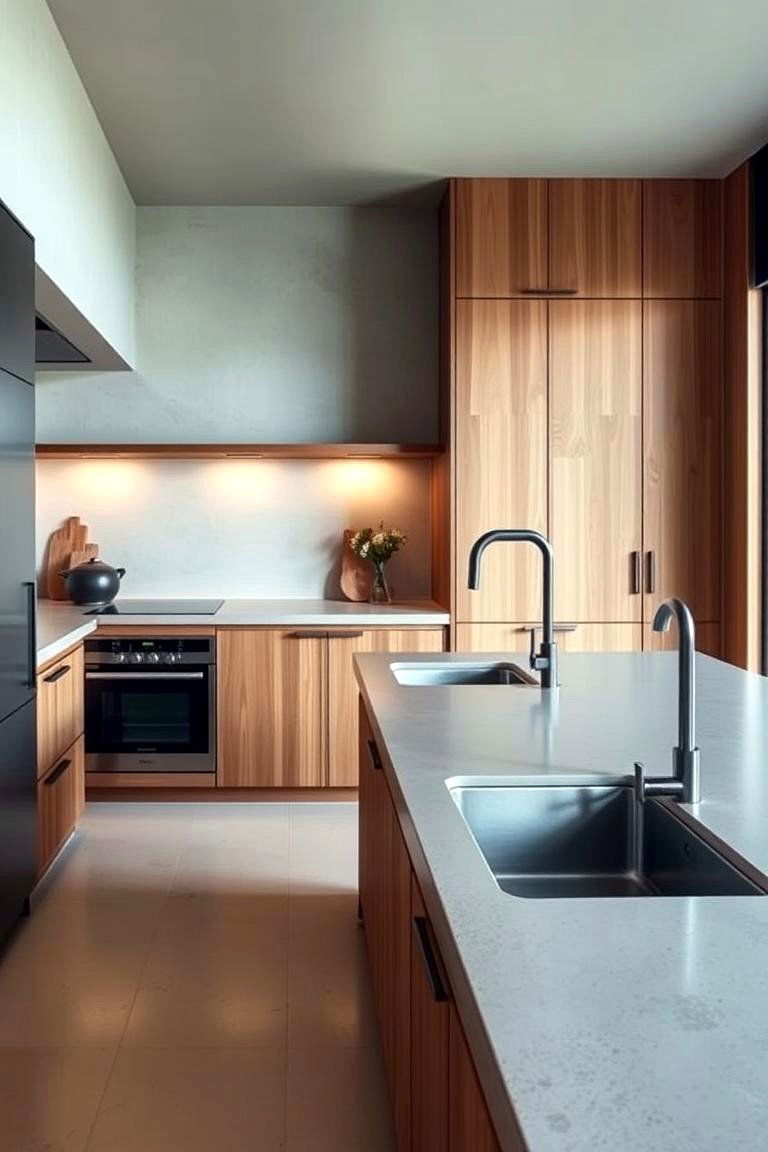
For a touch of modern sophistication that still aligns with natural elements, consider stone or concrete countertops. These materials offer a durable and visually appealing surface with a subtle texture. For instance, a honed granite or a smooth concrete countertop can complement the natural wood of the cabinets and contribute to a clean and contemporary Japanese aesthetic. Their neutral tones also provide a versatile backdrop for your culinary activities.
12. Indoor Greenery Accents
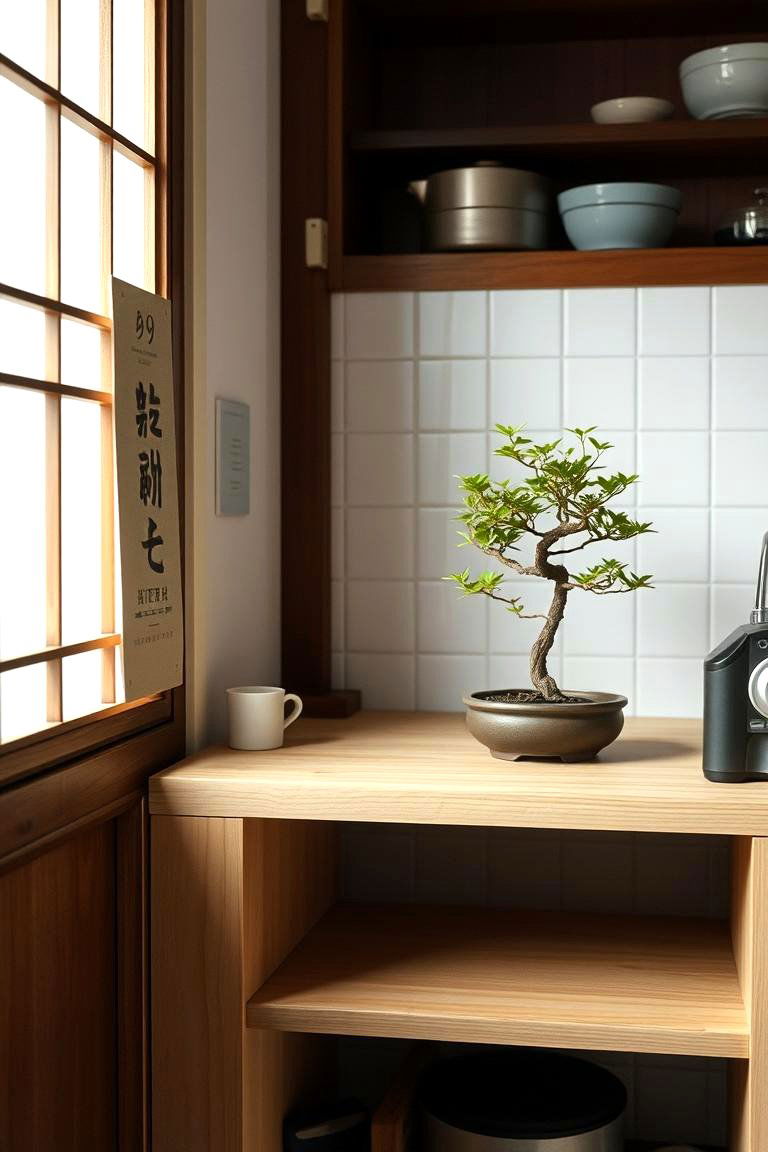
Bringing small touches of nature indoors through carefully placed greenery can enhance the tranquility of a Japanese kitchen. Consider adding a bonsai tree, a small potted plant, or even fresh herbs on a windowsill. These natural elements introduce a sense of life and freshness to the space, connecting it to the outdoors and promoting a feeling of well-being. Choose plants that thrive in indoor environments and require minimal maintenance.
13. Clean and Uncluttered Countertops
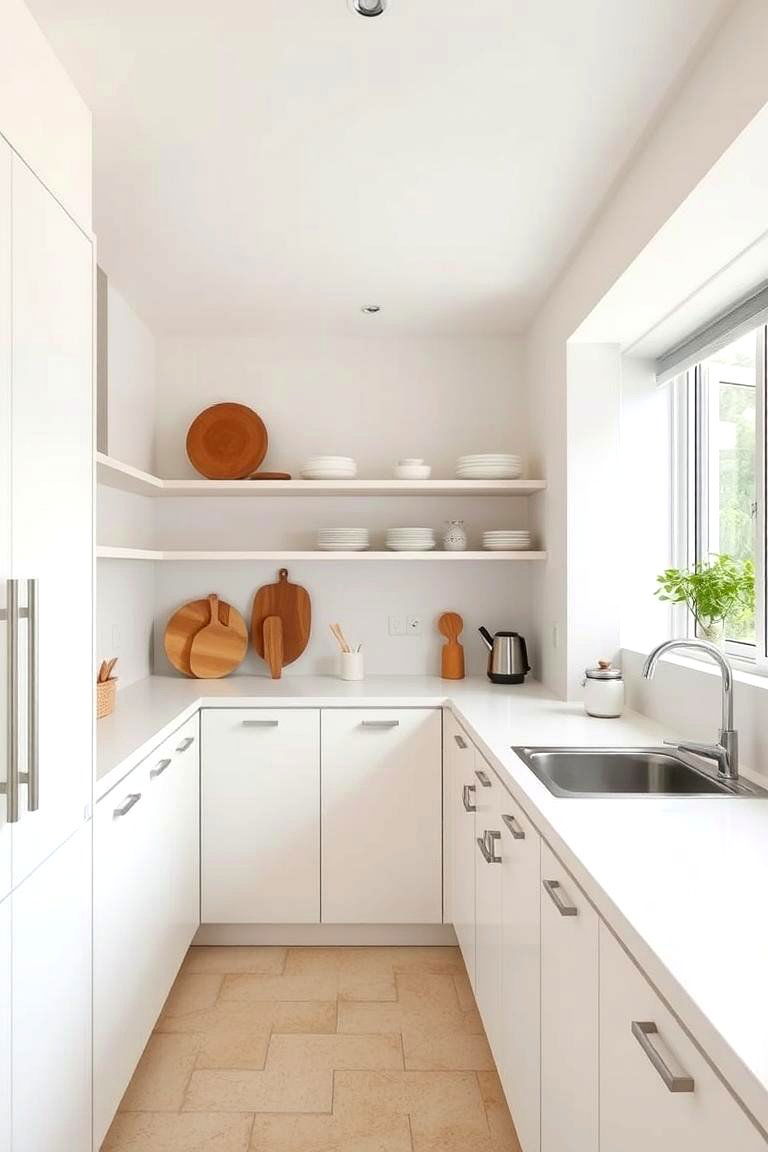
One of the hallmarks of a Japanese kitchen is its pristine and uncluttered appearance. Strive to keep your countertops free of unnecessary items. Store appliances, utensils, and other kitchen essentials neatly away in cabinets and drawers. This minimalist approach not only creates a visually calming environment but also makes food preparation and cleanup more efficient. Embrace the philosophy of "less is more" in your kitchen design.
14. Simple and Elegant Lighting Fixtures
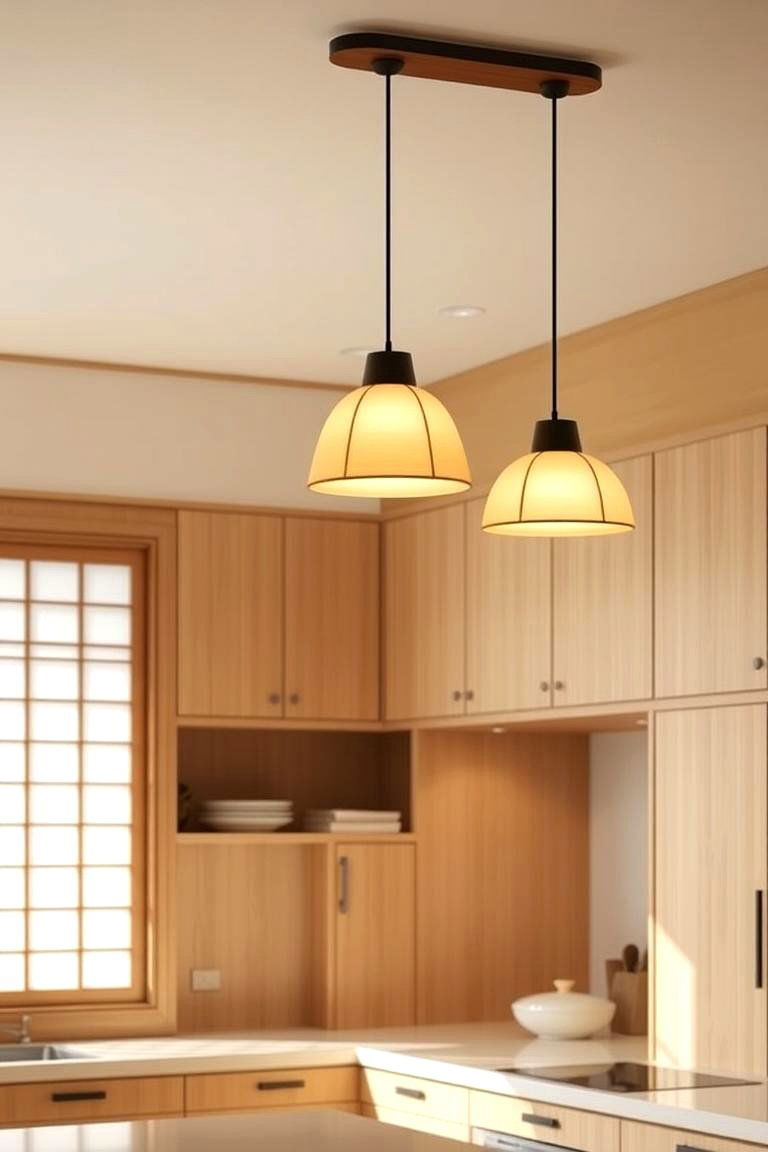
The lighting in a Japanese kitchen should be functional yet subtle and elegant. Opt for simple pendant lights or recessed lighting to providetask lighting without being overly ornate. Consider incorporating paper lanterns or shoji-inspired light fixtures for a touch of traditional Japanese charm and to cast a soft, warm glow. The goal is to create a well-lit space that feels calm and inviting, rather than harsh and bright.
15. Integrated Waste Disposal System
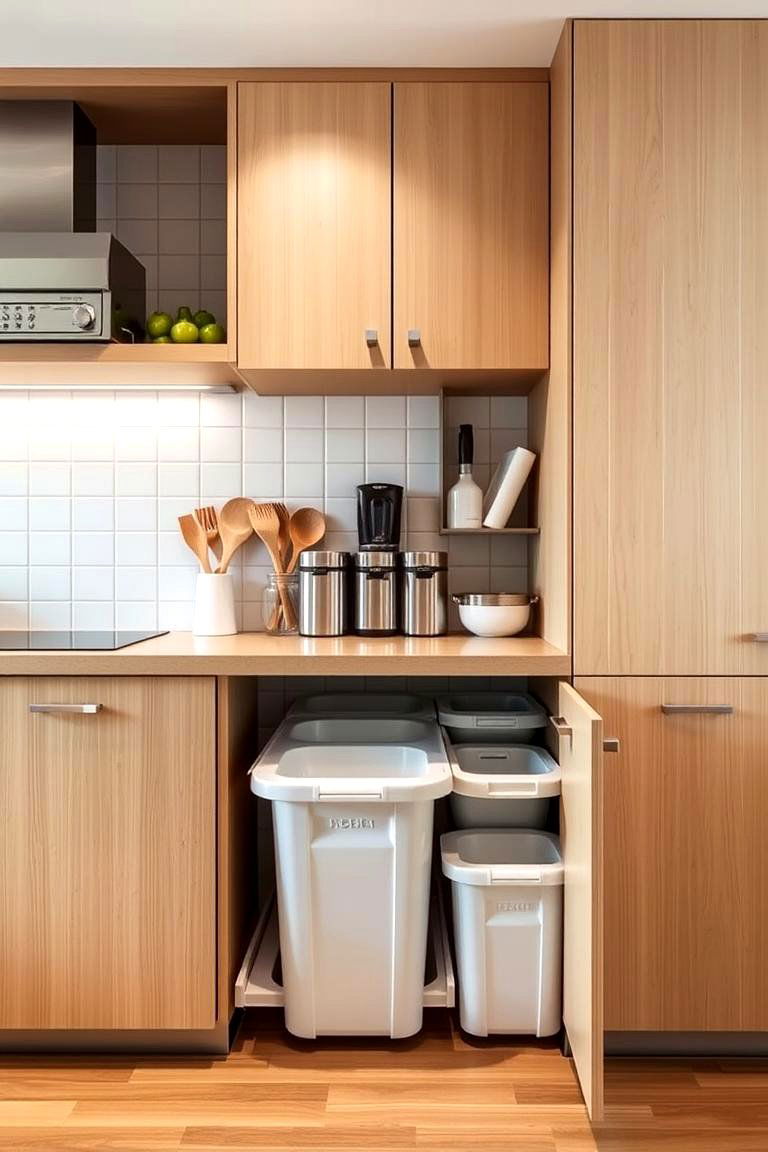
Maintaining a clean and organized kitchen is paramount in Japanese design. An integrated waste disposal system, such as pull-out trash and recycling bins hidden within cabinetry, helps to keep the kitchen looking tidy and minimizes visual clutter. This practical feature contributes to the overall minimalist aesthetic and promotes a sense of order and efficiency in the kitchen space.
16. Deep Single Basin Sink
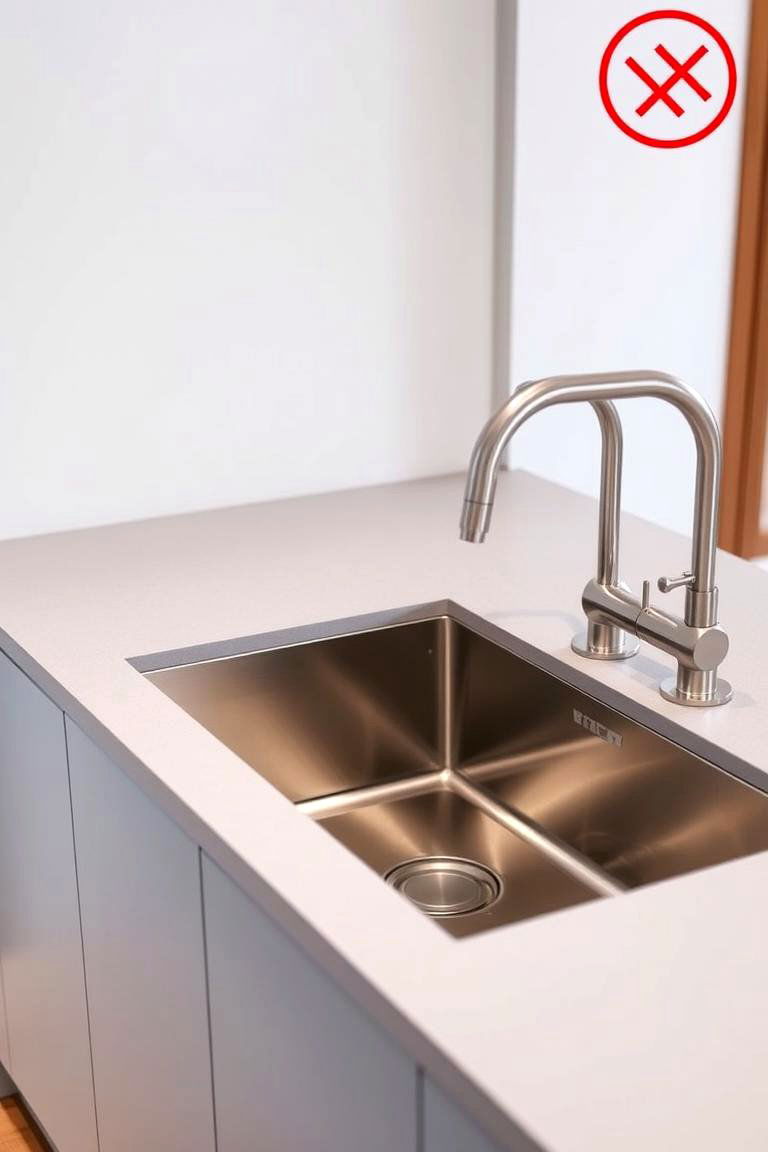
A deep single basin sink is a practical and aesthetically pleasing choice for a Japanese-inspired kitchen. Its clean lines and generous size make it efficient for washing large pots and pans. Furthermore, a single basin sink contributes to the minimalist look by reducing visual clutter compared to double basin sinks. Choose a material like stainless steel or a composite that complements the overall color scheme and design.
17. Handleless Cabinetry Design

For a sleek and modern take on Japanese minimalism, consider handleless cabinetry. This design feature creates a seamless and uncluttered look, emphasizing the clean lines and smooth surfaces of the cabinets. Cabinets can be opened with a push-to-open mechanism or integrated finger pulls. This subtle detail enhances the sophisticated and streamlined feel of the kitchen.
18. Display of Minimalist Artwork
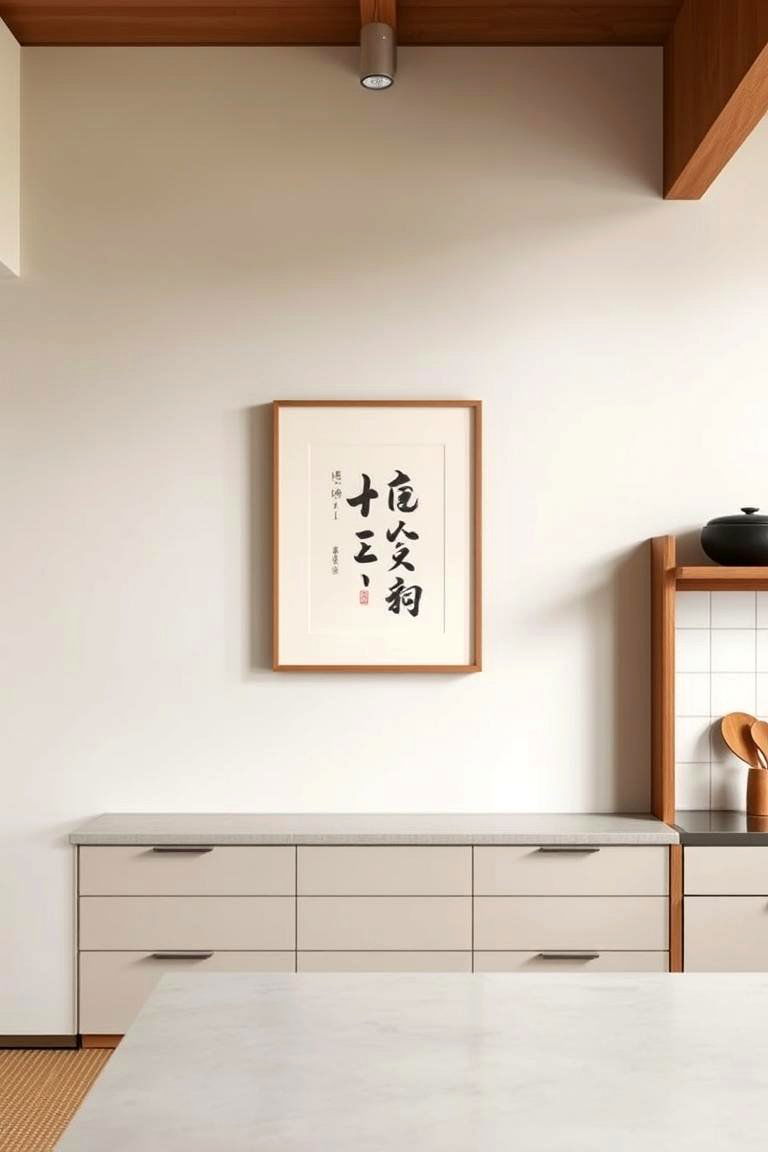
Adding a single piece of minimalist artwork, such as a simple calligraphy scroll or a subtle nature-inspired print, can bring a touch of personality and elegance to your Japanese kitchen. Avoid overcrowding the walls with too many decorations. The focus should be on quality over quantity, selecting a piece that resonates with the overall serene and understated ambiance of the space.
19. Use of Natural Materials for Accessories

Extend the use of natural materials to your kitchen accessories. Consider wooden cutting boards, bamboo utensils, and ceramic serving ware. These materials not only align with the Japanese appreciation for nature but also add subtle textures and warmth to the kitchen. Opt for simple, functional designs that complement the overall minimalist aesthetic.
20. Open Transition to Dining Area
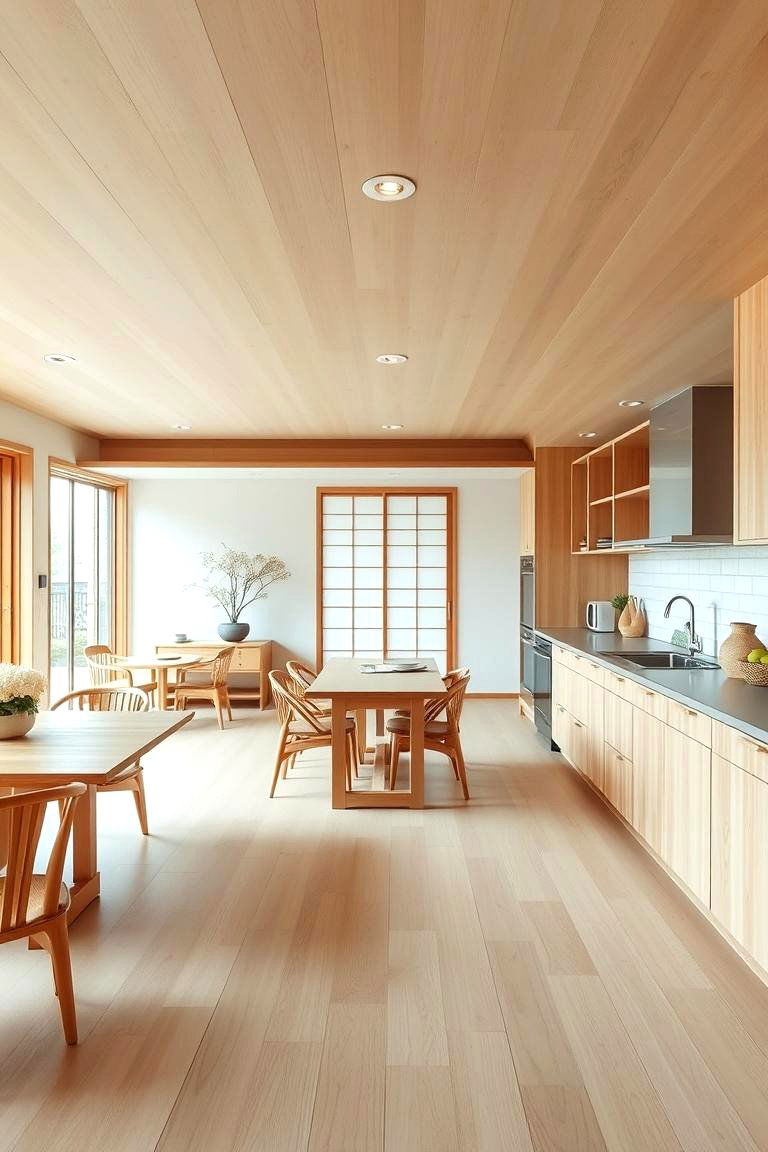
Creating an open transition between the kitchen and the dining area fosters a sense of flow and connection, characteristic of Japanese interior design. This can be achieved by avoiding physical barriers like walls or opting for a seamless flooring transition. This open layout encourages interaction and creates a more inclusive and welcoming space for family and guests.
21. Shoji Style Window Treatments

Extending the shoji screen aesthetic to your window treatments can further enhance the Japanese feel of your kitchen. Consider using lightweight, translucent roller blinds or shades that mimic the look and feel of rice paper. These treatments allow soft, diffused light to enter the kitchen while providing privacy. Their simple and elegant design complements the overall minimalist aesthetic.
22. Built-in Spice Rack
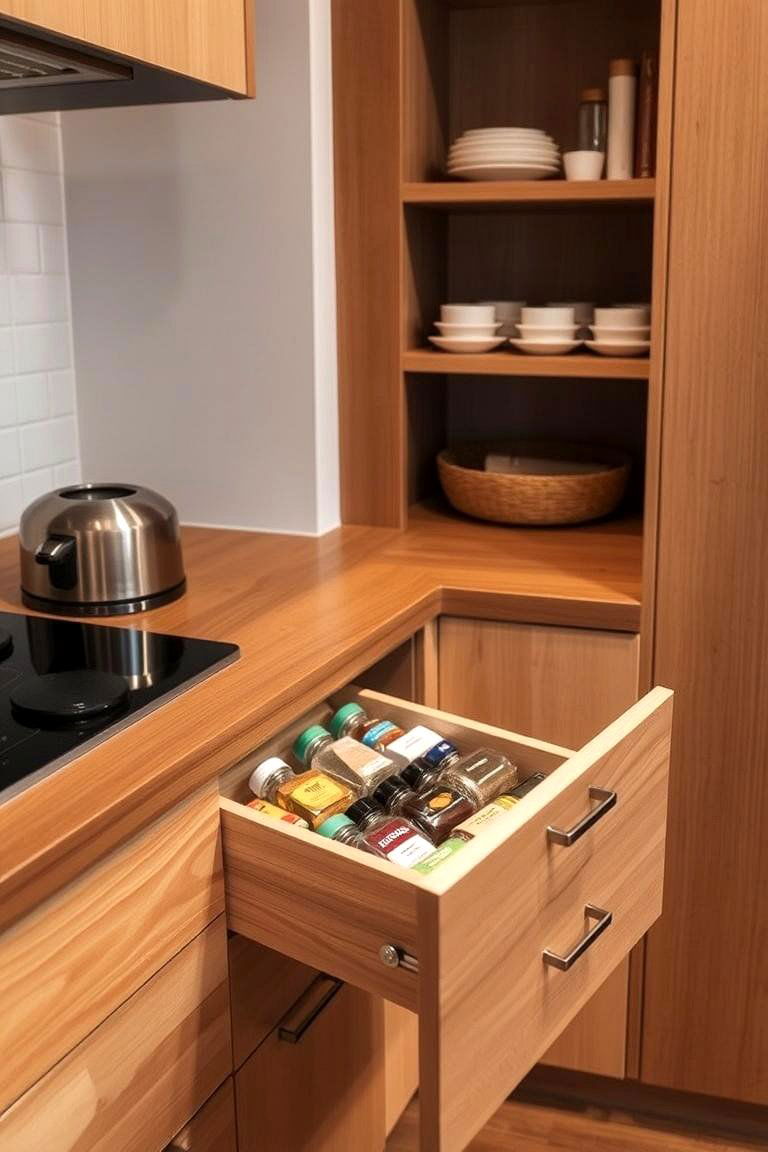
A built-in spice rack, integrated into a drawer or cabinet, is a practical way to keep your spices organized and easily accessible while maintaining a clutter-free countertop. This thoughtful detail enhances the functionality of the kitchen and aligns with the Japanese emphasis on efficiency and organization. Consider a tiered rack or individual containers for easy identification.
23. Subtle Textural Variations

While the overall aesthetic is minimalist, incorporating subtle textural variations can add depth and interest to your Japanese kitchen. This could include the smooth finish of wooden cabinets, the slightly rough texture of stone countertops, or the woven texture of tatami mats (if used). These subtle differences create a richer sensory experience without disrupting the overall sense of calm and simplicity.
24. Focus on Functionality and Flow
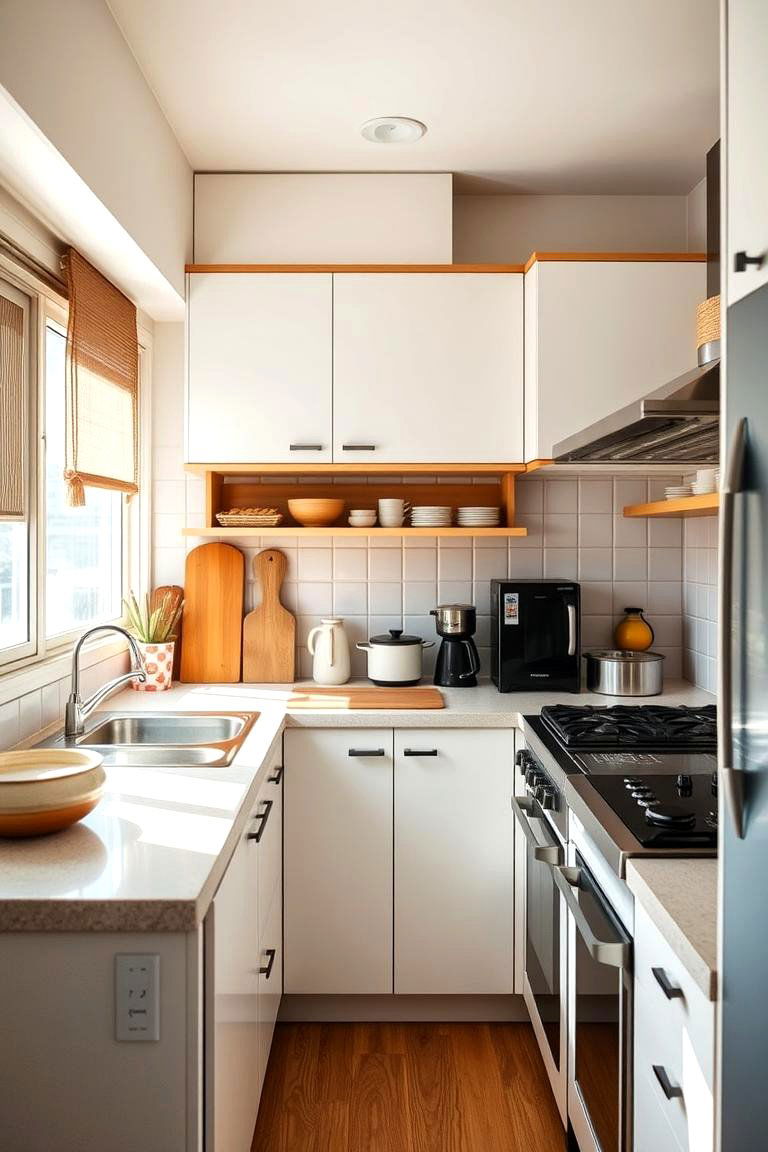
Ultimately, the core of a Japanese kitchen design lies in its functionality and flow. Every element should serve a purpose and contribute to an efficient and enjoyable cooking experience. Consider the placement of appliances, the layout of the workspace, and the ease of movement within the kitchen. By prioritizing practicality, you can create a kitchen that is not only beautiful but also a joy to use.
Conclusion:
The allure of Japanese kitchen design lies in its harmonious blend of simplicity, natural elements, and thoughtful functionality. These 24 Japanese Style Kitchen Ideas highlight the key principles of creating a serene and efficient culinary space. From the warmth of natural wood and the soft glow of shoji-inspired elements to the emphasis on decluttered surfaces and integrated solutions, each idea contributes to an atmosphere of calm and focus. By embracing these concepts, you can transform your kitchen into a tranquil haven that reflects the timeless elegance and practicality of Japanese design.


